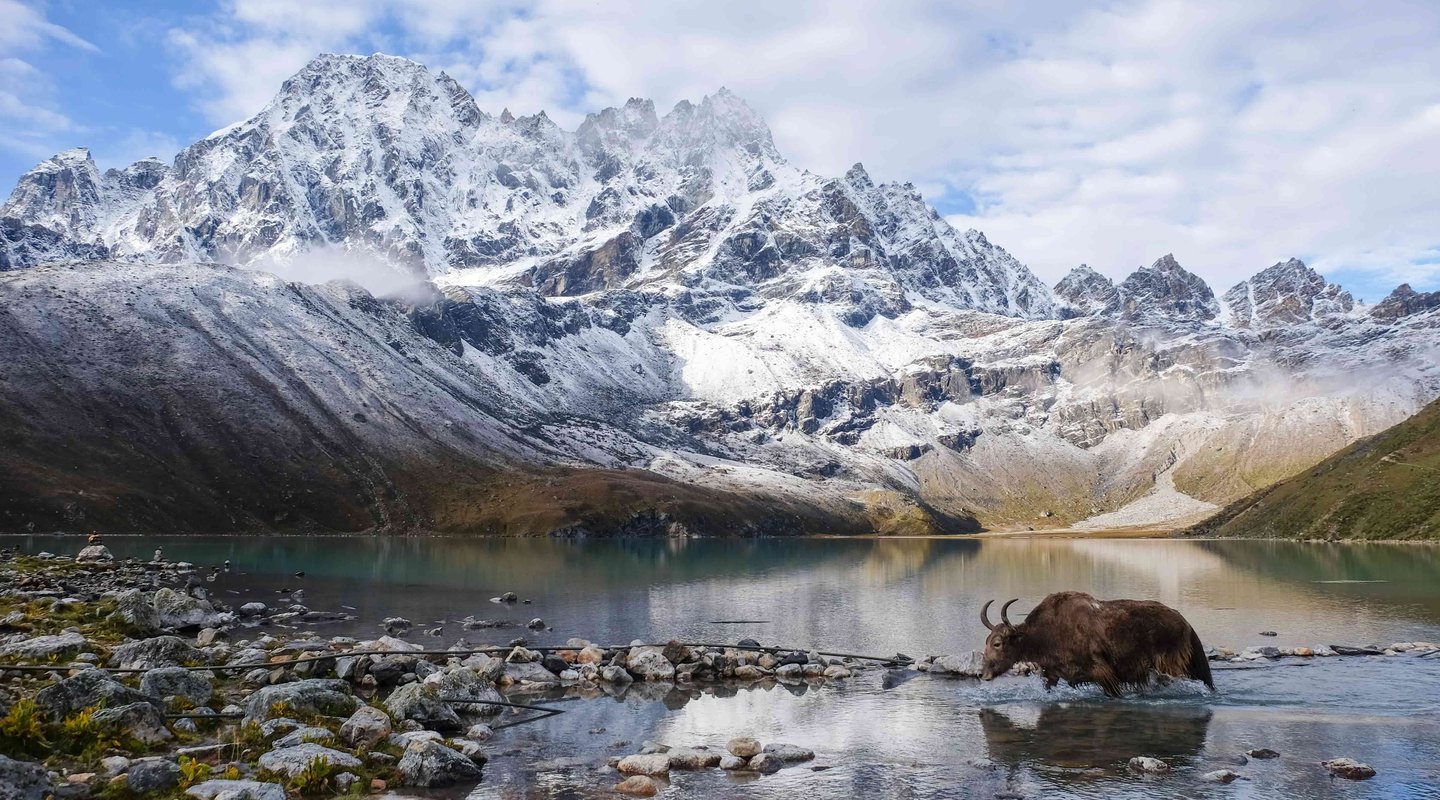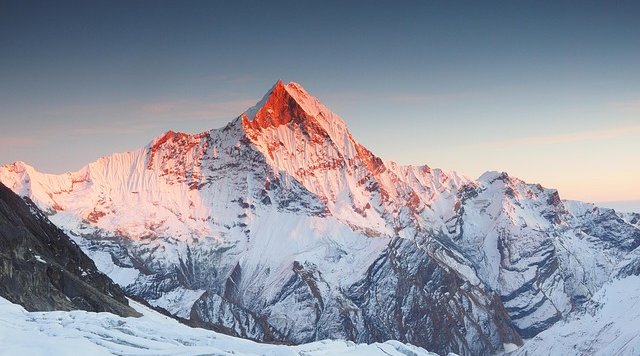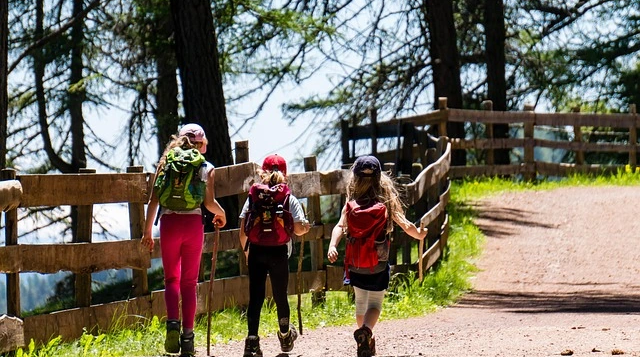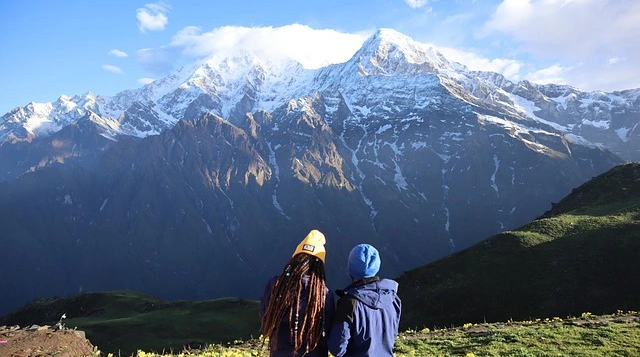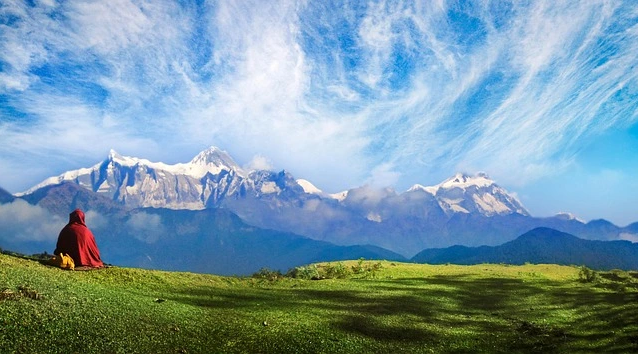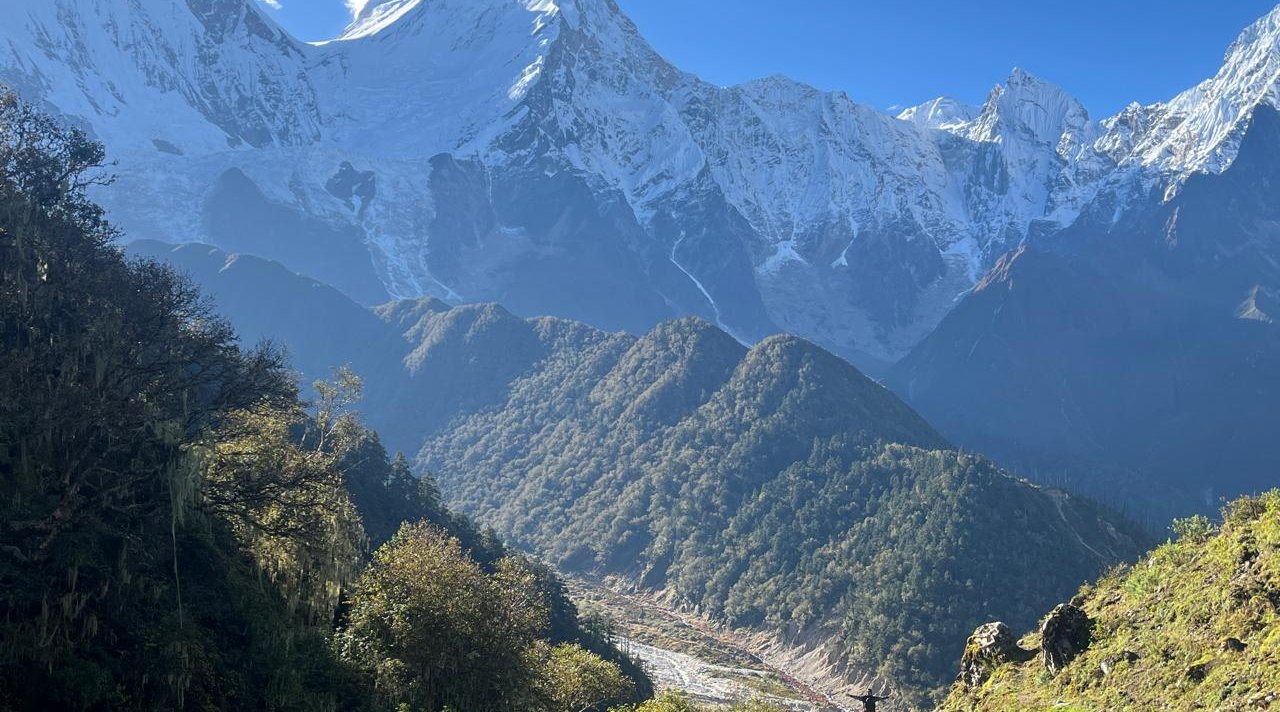Planning a trek to Nepal's stunning Gokyo Lakes but wondering about the Gokyo lake trek difficulty? This comprehensive guide breaks down exactly how challenging this high-altitude adventure really is, helping you prepare physically and mentally for one of the Himalayas' most rewarding journeys.
Quick Overview of the Gokyo Lakes Trek
The Gokyo Lakes trek takes you through the heart of the Everest region to a series of six pristine turquoise lakes at over 4,700 meters. Unlike the crowdedEverest Base Camp route, this trail offers equally spectacular mountain views with fewer trekkers.
The trek typically spans 12-14 days, reaching a maximum altitude of 5,357 meters at Gokyo Ri summit. You'll traverse through Sherpa villages, cross suspension bridges, and walk alongside the massive Ngozumpa Glacier.
Most trekkers find the Gokyo lakes trek difficulty moderate to challenging, primarily due to altitude rather than technical terrain. The trail itself doesn't require climbing skills, but the thin air and long walking days demand good physical preparation.
What Makes the Gokyo Lake Trek Difficult?
Altitude and Acclimatization Challenges
The Gokyo trek altitude presents the biggest challenge for most trekkers. Starting from Lukla at 2,860 meters, you'll gradually ascend to Gokyo village at 4,790 meters.
The real test comes during the Gokyo Ri trek difficulty - the pre-dawn summit push to 5,357 meters. At this elevation, oxygen levels drop to roughly 50% of sea level, making every step feel twice as hard.
Key altitude milestones include:
- Namche Bazaar: 3,440m (first acclimatization stop)
- Dole: 4,090m (noticeable air thinning)
- Machhermo: 4,470m (critical acclimatization point)
- Gokyo: 4,790m (base for summit attempt)
- Gokyo Ri: 5,357m (highest point)
Proper gokyo trek acclimatization requires at least two rest days built into your itinerary. Most cases of altitude sickness occur when trekkers ascend too quickly or skip acclimatization days to save time.
Trekking Distance and Duration
The Gokyo trek length and duration cover approximately 90-100 kilometers round-trip from Lukla. Daily walking distances range from 10-15 kilometers, taking 5-7 hours depending on pace and terrain.
What makes this challenging isn't just the distance but the combination of factors:
- Continuous uphill sections gaining 300-600 meters daily
- Rocky, uneven paths requiring constant attention
- Multiple river crossings via suspension bridges
- Steep descents that strain knees and ankles
The trail doesn't involve technical climbing, but some sections include:
- Steep stone staircases near Namche
- Rocky moraine paths around Gokyo
- Loose gravel sections require careful footing
- Narrow trails with significant drop-offs
Terrain, Trails, and Weather Conditions
The diverse terrain adds complexity to the Gokyo trek itinerary difficulty. You'll encounter everything from well-maintained paths through villages to remote glacier moraines.
Lower elevation trails (below 3,500m) feature:
- Stone-paved paths through forests
- Multiple suspension bridge crossings
- Well-defined routes with local traffic
Higher elevation challenges (above 4,000m) include:
- Rocky, unstable terrain near glaciers
- Exposed ridges with strong winds
- Potential snow and ice patches
- Limited shelter between settlements
Weather dramatically impacts difficulty levels. Temperature swings from 20°C during sunny days to -15°C at night require careful layering and quality gear.
Comparing Gokyo Lake Trek Difficulty with Other Treks
Gokyo Ri vs Everest Base Camp
The Gokyo vs Everest base camp difficulty comparison reveals interesting differences. While both reach similar altitudes, each presents unique challenges.
Gokyo Lakes Trek advantages:
- More gradual altitude gain
- Fewer crowded trails, reducing pressure
- Better acclimatization schedule
- Shorter daily distances
- Less developed route (more adventure)
EBC Trek advantages:
- Better infrastructure and facilities
- More teahouse options
- Clearer trail marking
- More support from fellow trekkers
- Established rescue protocols
The Gokyo trek vs EBC trek difficulty ultimately depends on personal preferences. Gokyo offers more solitude but requires greater self-sufficiency, while EBC provides comfort through crowds.
Gokyo 3 Passes Trek Difficulty
TheGokyo 3 passes trek difficulty represents the ultimate Everest region challenge. This 19-21 day adventure combines Gokyo Lakes with three high passes: Renjo La (5,360m), Cho La (5,420m), and Kongma La (5,535m).
Additional challenges include:
- Technical pass crossings requiring crampons
- Longer expedition demanding superior fitness
- Greater weather dependency
- Limited escape routes once committed
- Higher risk of altitude complications
Only experienced trekkers with excellent fitness should attempt the three passes variation. The standard Gokyo Lakes trek provides sufficient challenge for most adventurers.
Gokyo Lake Trek Difficulty by Season
Spring Trek Conditions
The Gokyo trek in spring (March-May) offers ideal conditions for most trekkers. Clear skies provide stunning mountain views while moderate temperatures make walking comfortable.
Spring advantages:
- Stable weather patterns
- Rhododendron blooms below 3,500m
- Warmer nights at altitude
- Best mountain visibility
- Optimal trail conditions
Spring challenges:
- Peak season crowds
- Higher accommodation costs
- Potential flight delays to Lukla
- Dust on lower trails
Autumn Trek Conditions
The Gokyo trek in autumn (September-November) rivals spring for popularity. Post-monsoon clarity delivers exceptional mountain views.
Autumn benefits:
- Crystal-clear mountain vistas
- Stable weather windows
- Cultural festivals in villages
- Comfortable daytime temperatures
- Excellent trail conditions
Autumn considerations:
- Highest trekker numbers
- Advanced booking essential
- Colder nights than spring
- Early winter storms possible (late November)
Winter Trek Challenges
The Gokyo trek in winter (December-February) tests even experienced trekkers. While you'll enjoy solitude and pristine views, harsh conditions demand extra preparation.
Winter realities:
- Night temperatures plummet to -20°C
- Daytime highs barely reach 5°C
- Some teahouses close seasonally
- Snow blocks higher trails
- Limited daylight hours (trek ends by 4 PM)
Winter requires:
- Four-season sleeping bag (-20°C rated)
- Insulated boots and crampons
- Extra warm layers
- Flexible itinerary for weather delays
- Experienced guide familiar with winter conditions
Monsoon Trek Risks
The Gokyo trek in monsoon (June-August) presents unique challenges. While possible, most trekkers avoid this season.
Monsoon difficulties:
- Daily rainfall (usually afternoons)
- Extremely limited mountain views
- Slippery, muddy trails
- High leech activity below 3,000m
- Frequent Lukla flight cancellations
Monsoon advantages:
- Minimal crowds
- Lush, green landscapes
- Lower costs
- Cultural authenticity
- Dramatic cloud formations
Who Can Do the Gokyo Lake Trek?
Beginners vs Experienced Trekkers
The Gokyo trek for beginners is possible with proper preparation. You don't need previous high-altitude experience, but some hiking background helps significantly.
Beginners can succeed if they:
- Train consistently for 3-4 months
- Choose a longer itinerary (14+ days)
- Hire experienced guides
- Listen to their bodies
- Accept a slower pace
Experienced trekkers benefit from:
- Faster acclimatization
- Better pace judgment
- Gear knowledge
- Trail confidence
- Emergency awareness
First-timers often underestimate the altitude impact. Even marathon runners struggle without proper acclimatization, while moderately fit individuals who respect the altitude often succeed.
Recommended Fitness Level
The ideal Gokyo trek fitness level combines cardiovascular endurance with leg strength. You should comfortably handle:
Minimum fitness standards:
- Walk 5-6 hours with a backpack
- Climb 1,000 meters in elevation in a day
- Handle consecutive hiking days
- Carry a 5-8kg daypack
- Maintain a steady pace uphill
Training recommendations:
- Start 3-4 months before departure
- Hike weekly with progressive difficulty
- Include stair climbing or hill repeats
- Add weight to the backpack gradually
- Practice at altitude if possible
Regular activities that build trek fitness:
- Trail running
- Cycling (especially hills)
- Swimming for cardio
- Yoga for flexibility
- Strength training for legs
Trekking with Kids or Families
The Gokyo trek with kids requires careful consideration. While possible, most experts recommend a minimum age of 10-12 years.
Child-specific challenges:
- Higher susceptibility to altitude sickness
- Shorter attention spans
- Need for entertainment
- Dietary limitations
- Safety concerns on exposed sections
Family trekking tips:
- Choose a conservative itinerary (16+ days)
- Plan shorter daily distances
- Hire extra support staff
- Pack favorite snacks
- Prepare engaging activities
Successful family treks require:
- Previous hiking experience together
- Children are comfortable with basic conditions
- Flexible expectations
- Extra acclimatization days
- Constant health monitoring
Preparing for the Gokyo Lakes Trek
Training & Fitness Plan
A structured preparation plan significantly reduces perceived difficulty. Start training at least 12 weeks before departure.
Weeks 1-4: Base Building
- 3-4 cardio sessions weekly (30-45 minutes)
- 2 strength training sessions
- One long walk (2-3 hours)
- Focus on consistency over intensity
Weeks 5-8: Intensity Increase
- 4-5 cardio sessions (45-60 minutes)
- Include hill intervals twice weekly
- Weekend hikes (4-5 hours)
- Add a weighted backpack (5-10kg)
Weeks 9-12: Trek Simulation
- Back-to-back hiking days
- Full pack weight (8-10kg)
- Stair climbing sessions
- Practice with trekking poles
Include altitude training if available through:
- Altitude simulation masks
- Hypoxic training centers
- High-altitude destinations
- Breathing exercises
Packing & Essential Gear
Proper equipment significantly impacts your comfort and gokyo trek safety and risks management.
Critical items for difficulty management:
- Quality trekking boots (broken in)
- Layering system for temperature regulation
- Trekking poles (reduce knee strain by 30%)
- High-quality sleeping bag (-15°C minimum)
- Proper backpack with hip support
Altitude-specific gear:
- Pulse oximeter for monitoring
- Diamox (consult doctor first)
- Hydration system (3-4 liters capacity)
- Sun protection (UV increases with altitude)
- Emergency supplies
Comfort items reducing perceived difficulty:
- Blister prevention kit
- Favorite snacks for morale
- Entertainment for rest days
- Quality headlamp for early starts
- Portable charger for devices
Acclimatization and Safety Tips
Proper gokyo trek tips for acclimatization make the difference between success and failure.
Golden rules for altitude:
- Ascend slowly (max 500m per day above 3,000m)
- Climb high, sleep low
- Stay hydrated (4+ liters daily)
- Avoid alcohol completely
- Listen to your body
Early altitude sickness signs:
- Persistent headache
- Nausea or appetite loss
- Unusual fatigue
- Difficulty sleeping
- Dizziness or confusion
Prevention strategies:
- Include rest days at 3,400m and 4,400m
- Walk at a conversational pace
- Eat high-carb meals
- Keep warm but not overheated
- Consider preventive Diamox
The gokyo trek altitude sickness risk affects 30-40% of trekkers to some degree. Most experience mild symptoms that resolve with rest and hydration.
Do You Need a Guide for the Gokyo Lakes Trek?
The question of whether a Gokyo trek guide is required depends on experience and comfort level. While not legally mandatory, guides significantly enhance safety and success rates.
Benefits of hiring a guide:
- Route finding in poor weather
- Altitude sickness recognition
- Cultural interpretation
- Teahouse booking assistance
- Emergency response capability
- Local knowledge of conditions
When guides become essential:
- First-time trekkers
- Solo travelers
- Winter or monsoon seasons
- Limited English skills
- Health concerns
- Photography focus
The Gokyo trek for solo travelers is possible, but requires:
- Previous trekking experience
- Strong navigation skills
- Emergency preparedness
- Flexible attitude
- Travel insurance with evacuation
Solo trekkers should consider:
- Joining others at Lukla
- Hiring a guide-porter combination
- Staying in popular teahouses
- Carrying a communication device
- Informing someone of plans
FAQs on Gokyo Lake Trek Difficulty
Is the Gokyo Lake trek suitable for beginners?
Yes, beginners can complete the Gokyo trek with proper training, a conservative itinerary, and professional guide support. Focus on fitness preparation and choose a 14+ day schedule for adequate acclimatization.
How does the Gokyo trek compare with the Everest Base Camp in terms of difficulty?
Gokyo is slightly easier than EBC due to more gradual altitude gain and shorter daily distances. However, Gokyo Ri summit day rivals anything on the EBC trek for challenge.
What's the hardest part of the Gokyo Lakes trek?
The Gokyo Ri summit push presents the greatest challenge, combining high altitude (5,357m), steep ascent, and pre-dawn start. The 3-hour climb tests both physical and mental strength.
Can children do the Gokyo Lake trek?
Children aged 10+ with hiking experience can attempt Gokyo with extra precautions. Plan a longer itinerary, hire additional support, and monitor constantly for altitude effects.
What fitness level is needed for Gokyo Lakes?
Moderate to good fitness suffices. You should comfortably walk 5-6 hours daily with a daypack and handle uphill hiking. Specific high-altitude experience isn't required but helps.
Is the Gokyo trek harder in winter?
Winter significantly increases difficulty due to extreme cold (-20°C nights), snow-covered trails, and limited facilities. Only experienced, well-equipped trekkers should attempt winter ascents.
Do I need travel insurance for the Gokyo trek?
Comprehensive insurance covering high-altitude trekking (up to 6,000m) and helicopter evacuation is essential. Most agencies require proof of insurance before trek commencement.
How common is altitude sickness on the Gokyo trek?
Approximately 30-40% of trekkers experience mild altitude symptoms. Severe cases requiring evacuation affect less than 5% when proper acclimatization is followed.
Can I do the Gokyo trek without a porter?
Yes, if you're comfortable carrying 10-15kg, including a sleeping bag, clothes, and personal items. Porters reduce physical strain, allowing better energy conservation at altitude.
What's the success rate for reaching Gokyo Ri?
With proper acclimatization, 85-90% of trekkers successfully summit Gokyo Ri. Weather and individual altitude response are the main variables affecting success.
Final Thoughts — Is the Gokyo Lake Trek Worth the Challenge?
The Gokyo Lake trek difficulty shouldn't deter you from experiencing one of Nepal's most spectacular adventures. While challenging, thousands of ordinary people complete this trek annually with proper preparation.
The combination of stunning turquoise lakes, panoramic Himalayan views, and authentic cultural experiences far outweighs the temporary discomfort. Most trekkers describe Gokyo as life-changing, with the difficulty adding to rather than detracting from the achievement.
Ready to take on the challenge? Start your training today, contact Himalayanhero Adventures, and prepare for an adventure that will test your limits while rewarding you with memories to last a lifetime. The pristine lakes and towering peaks of Gokyo await those brave enough to answer the mountain's call.

